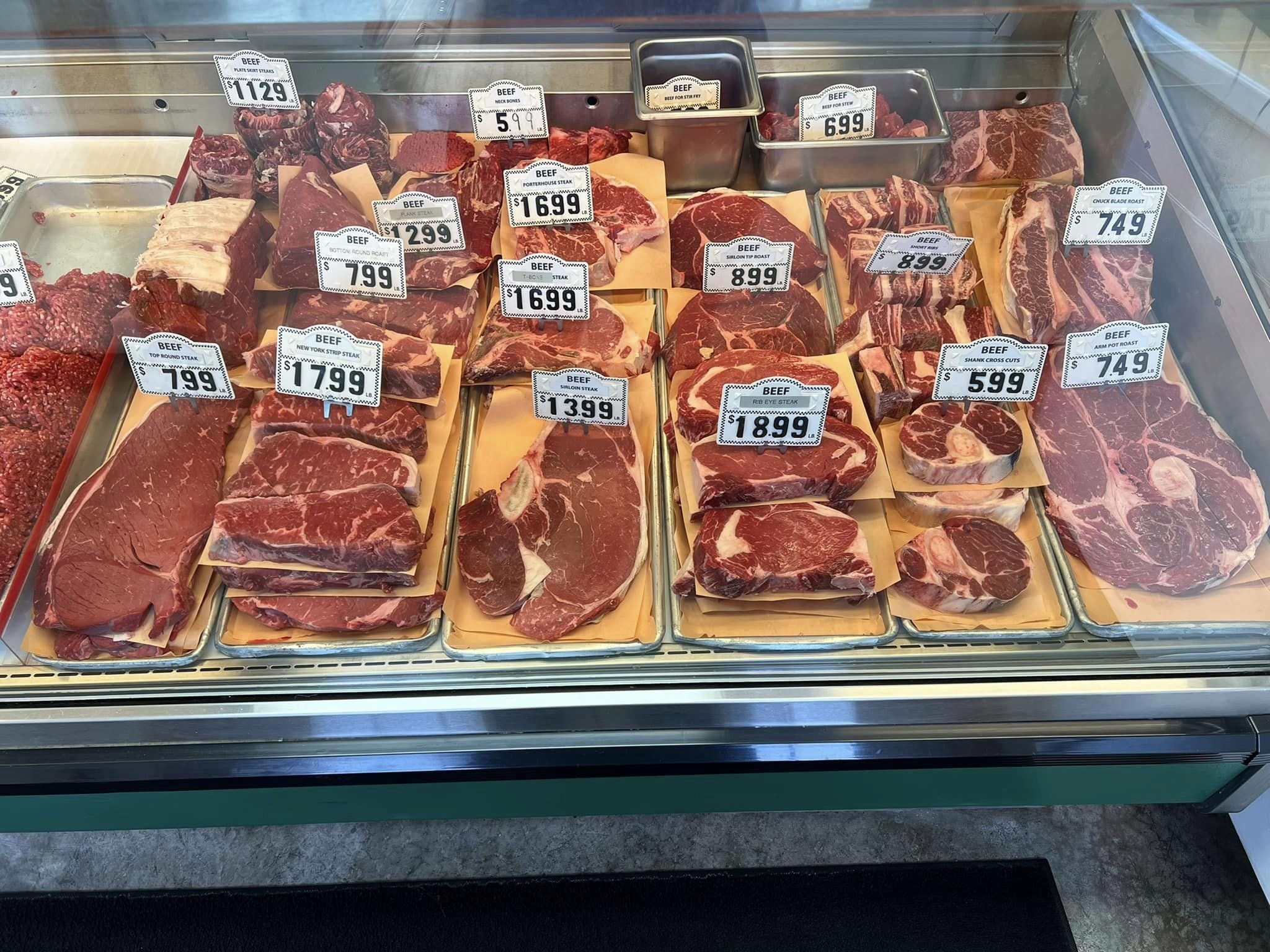Just How to Choose the Perfect Cut of Meat From a Trusted Meat Market
Choosing the perfect cut of meat from a trusted meat market calls for a thoughtful strategy that balances quality, cooking function, and spending plan. Understanding the numerous sorts of meat and their particular cuts is crucial, as is involving with your butcher to acquire understandings right into sourcing and preparation. Observing characteristics such as color, structure, and marbling can additionally lead your choice. As you think about these elements, it ends up being clear that the nuances of your selection might considerably influence the outcome of your meal, prompting a deeper expedition of the requirements that genuinely issue.
Comprehending Meat Cuts


As an example, the tenderloin is treasured for its buttery structure and minimal connective tissue, making it suitable for quick food preparation techniques such as cooking or pan-searing. On the other hand, tougher cuts like the brisket or shank gain from slow food preparation techniques to damage down collagen, yielding abundant and savory outcomes.
In addition, the fat material of a cut plays a crucial duty in flavor profile and moisture retention throughout food preparation. Cuts with higher fat content, such as ribeye, provide a more durable taste, while leaner alternatives, like sirloin, might require careful prep work to stay clear of dryness (bagley meat market edwardsville il). Comprehending these nuances enables informed options that elevate cooking developments, making sure that each meal showcases the most effective qualities of the chosen meat
Factors to Think About
When selecting the best cut of meat, a number of important aspects enter into play that can significantly impact the final recipe. Take into consideration the type of meat you prefer-- beef, pork, lamb, or fowl-- as each deals distinct tastes and structures. The details cut within that group is similarly vital; for circumstances, ribeye supplies abundant marbling, while tenderloin offers a lean, buttery appearance.
An additional factor is the food preparation technique you intend to use. Cuts appropriate for grilling, such as T-bones or sirloins, differ from those far better fit for sluggish cooking, like chuck roasts or shanks. Additionally, quality is paramount; constantly choose meat with a vibrant shade and company texture, indicating top quality and proper handling.
Premium cuts might provide why not find out more phenomenal taste, yet there are additionally economical choices that, when prepared properly, can generate tasty outcomes. Balancing these elements will assist you pick the perfect cut for your culinary demands.
Concerns to Ask Your Butcher
A butcher's proficiency can be indispensable when picking the optimal cut of meat for your cooking ventures. Begin by inquiring regarding the source of the meat.
Following, ask about the different cuts offered for the type of meat you like. A knowledgeable butcher will certainly clarify the nuances of each cut, aiding you select one that matches your food preparation method and desired end result. Don't think twice to ask concerning the best cooking techniques for a details cut; butchers typically have pointers that can improve your recipe.
It's additionally prudent to ask about the meat's freshness. A good butcher will certainly be excited to share their proficiency and suggest cuts that will certainly delight your taste. Involving your butcher with these concerns can significantly boost your meat selection experience.
Recognizing Top Quality Meat

Appearance is another critical element; quality meat should feel strong and somewhat springy to the touch. Prevent any cuts that really feel slimed or exceedingly dry, as these can show putridity or incorrect storage. Furthermore, odor plays an important duty; fresh meat needs to have a tidy, neutral aroma, while any off-putting or sour odors are warnings.
Finally, consider the source. Purchasing from a reliable meat market, where the meat's beginning is recognized, can ensure better criteria. By focusing on these indicators-- shade, marbling, texture, odor, and source-- you can with confidence select cuts that will boost your food preparation and dining experience.
Food Preparation Approaches for Each Cut
Picking the ideal cooking technique is critical for taking full advantage of the taste and inflammation of each cut of meat. Various cuts Go Here possess one-of-a-kind features that determine the most suitable food preparation methods.
For tender cuts, such as filet mignon or ribeye, completely dry warm methods like barbecuing, broiling, or pan-searing are perfect. Conversely, tougher cuts, such as chuck or brisket, advantage from damp heat approaches, consisting of braising or slow cooking.
Pork chops and chicken busts are flexible and can be cooked making use of both completely dry and wet methods. While grilling or roasting can generate tasty results, poaching or sautéing can preserve wetness and inflammation. For lamb, methods like roasting or braising are recommended, as they match the meat's robust flavor.

Final Thought
Finally, selecting the excellent cut of meat from a respectable meat market requires a detailed understanding of meat cuts and consideration of numerous aspects, including source, high quality, and cooking techniques. Engaging with the butcher via targeted questions can produce useful understandings and recommendations customized to particular cooking needs. Focusing on both high quality and budget plan will boost the overall gastronomic experience, making certain that the picked cut fulfills assumptions in both flavor and prep work.